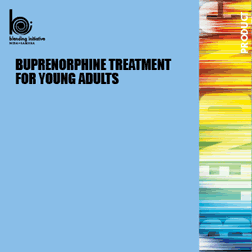Buprenorphine Treatment for Young Adults

The Buprenorphine Treatment for Young Adults Blending Team designed a training package which highlights the findings of the NIDA CTN study that compared longer term versus short-term buprenorphine/naloxone treatment in an outpatient setting. The 3-hour training program examines the prevalence of and treatment admission rates for nonmedical use of opioids among young adults; provides an overview of opioid use among young adults; explores and increases understanding of the results of new research on using buprenorphine to treat opioid addiction in young adults; and describes the implications of these findings for the treatment of opioid addiction in young adults.
Buprenorphine For Young Adults Blending Team Members
NIDA/ NDAT CTN
- Laura F. McNicholas, M.D., Ph.D. - Philadelphia VAMC
- Michael P. Bogenschutz, M.D. - The University of New Mexico
- Geetha Subramanian, M.D. - Johns Hopkins University
- Shannon Garrett, M.S.W., LGSW - Mountain Manor Treatment Center
- Susan Storti, Ph.D., R.N., CARN-AP - Synergy Enterprises, Inc.
- NIDA CTN Lead Investigator: George Woody, M.D., University of Pennsylvania
SAMHSA/CSAT-ATTC
- Thomas Freese, Ph.D. - Pacific Southwest ATTC (Chair)
- Pamela Waters, M.Ed. - Southern Coast ATTC
- Thomas Durham, Ph.D., LDAC - Central East ATTC
- Beth Rutkowski, M.P.H. - Pacific Southwest ATTC

